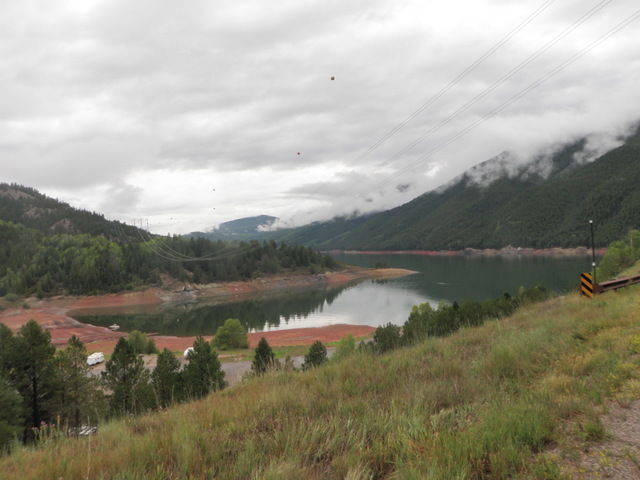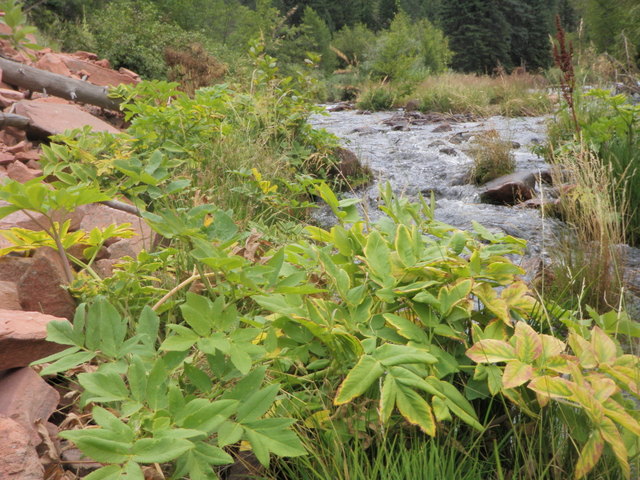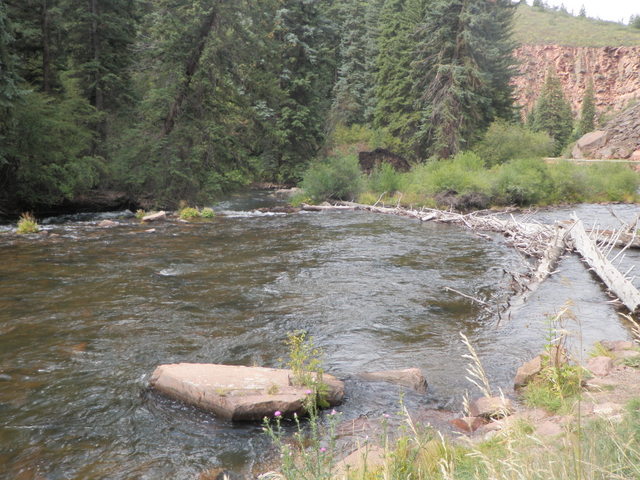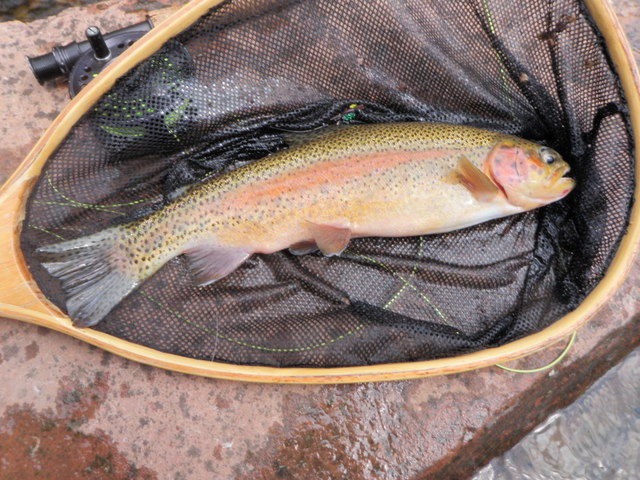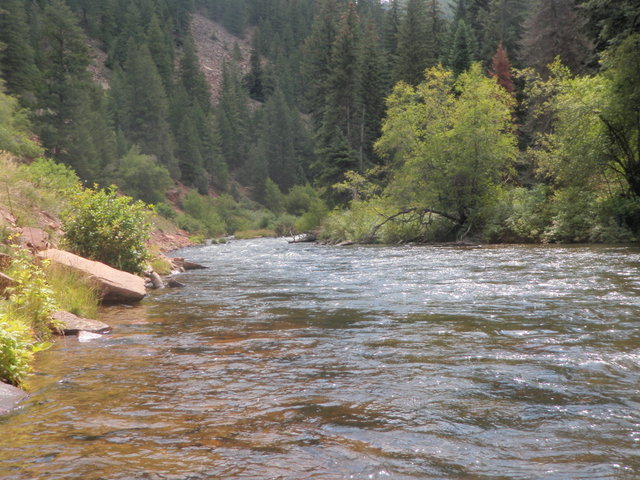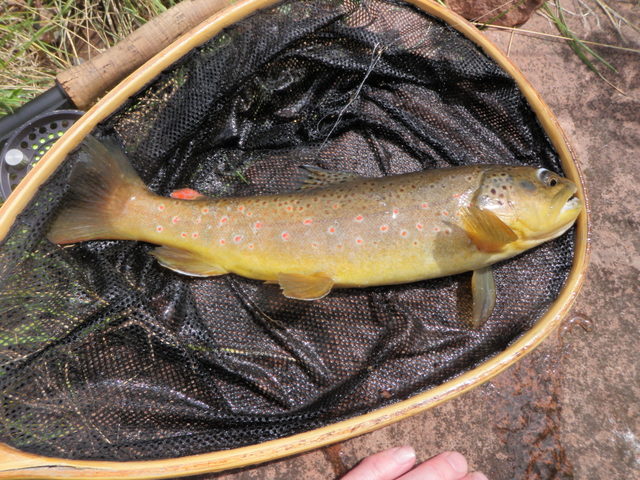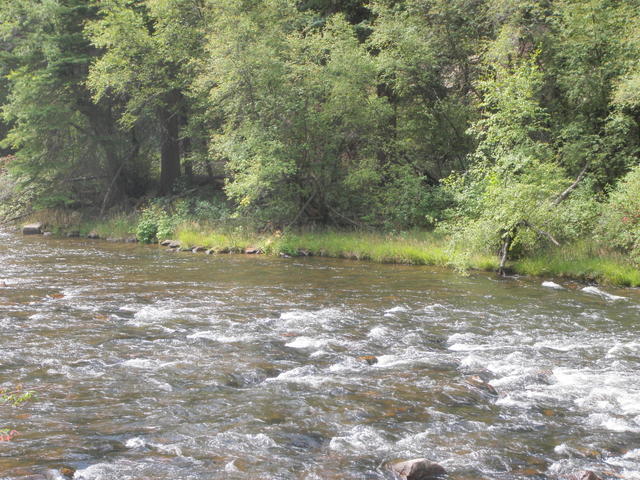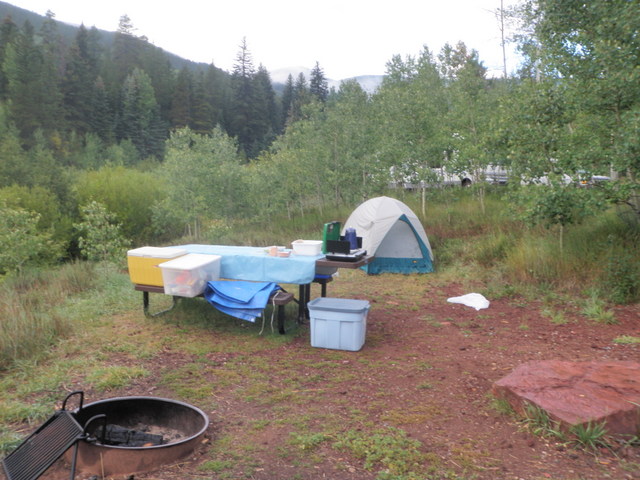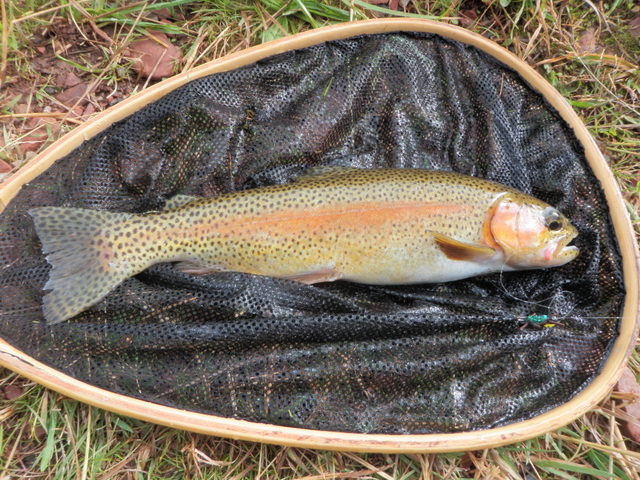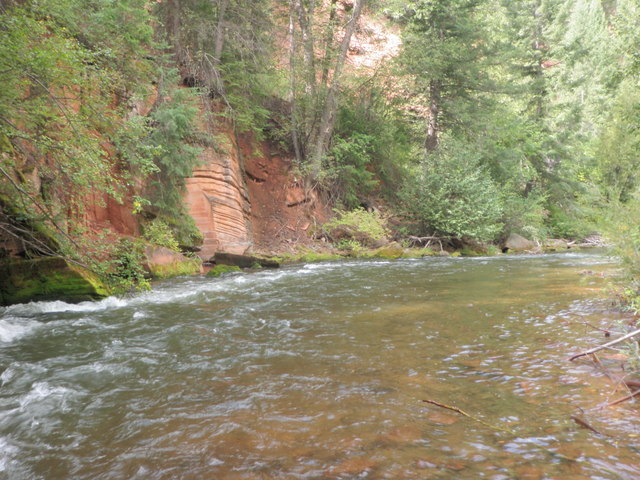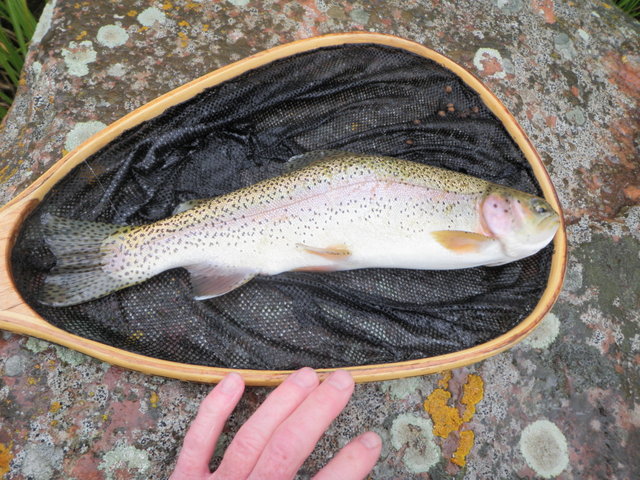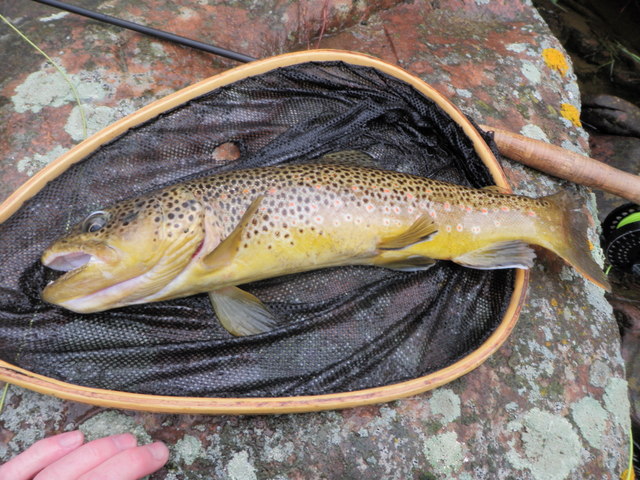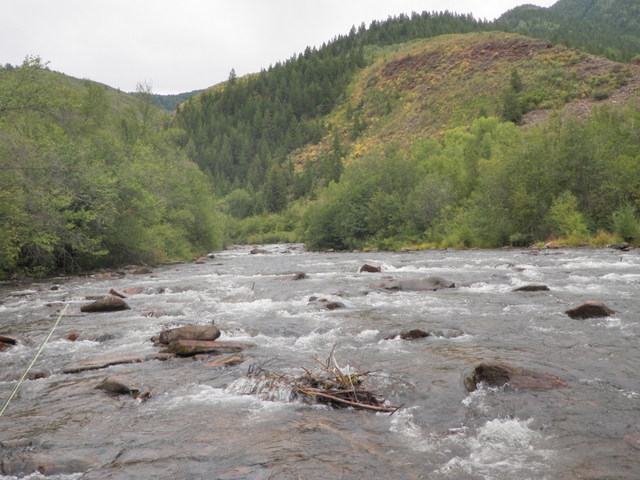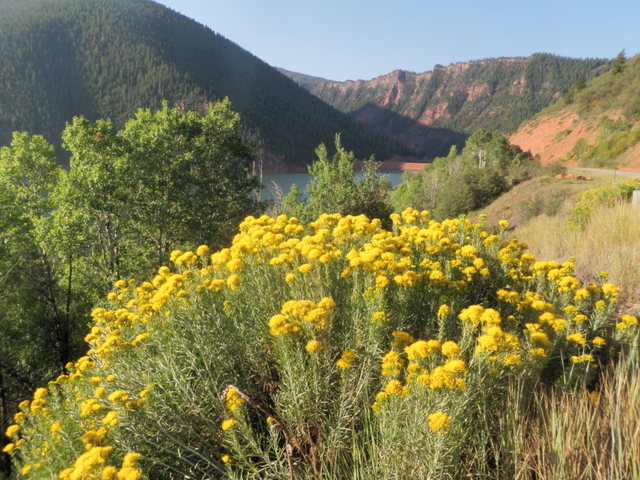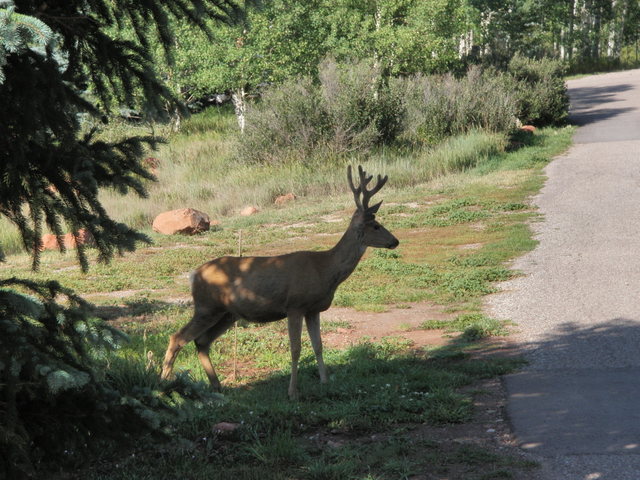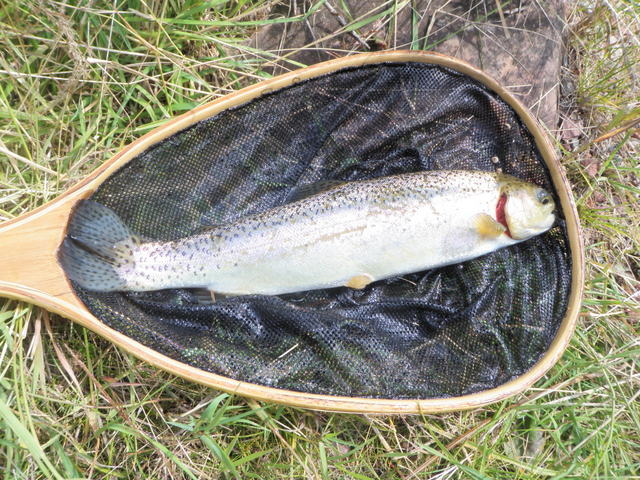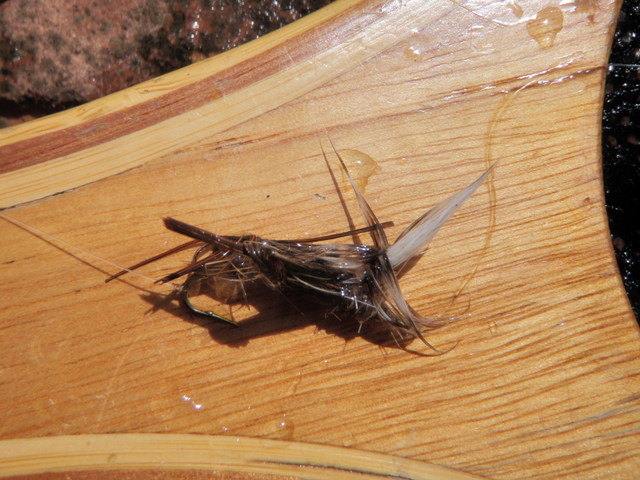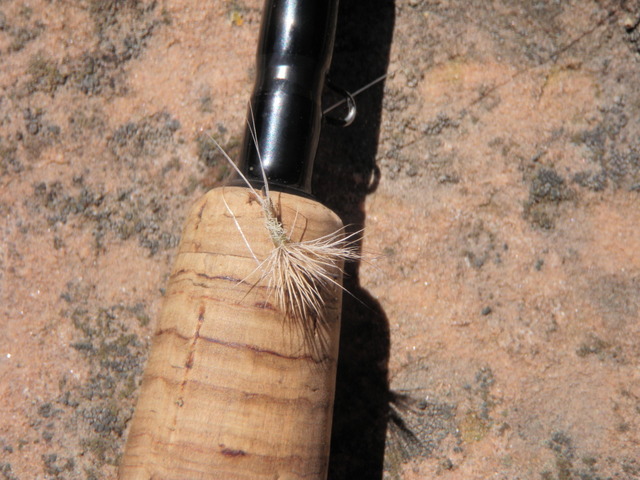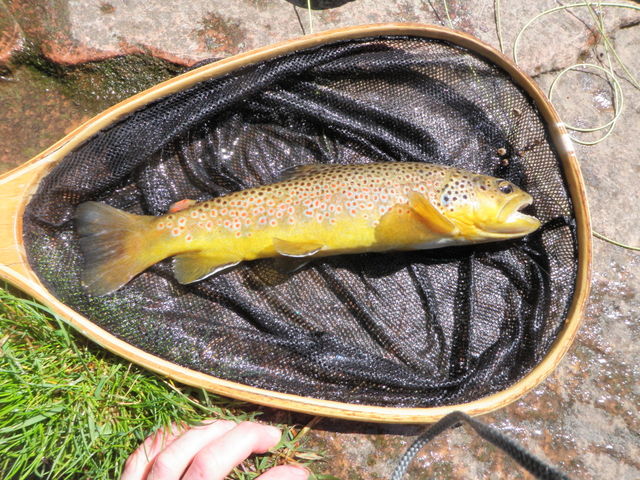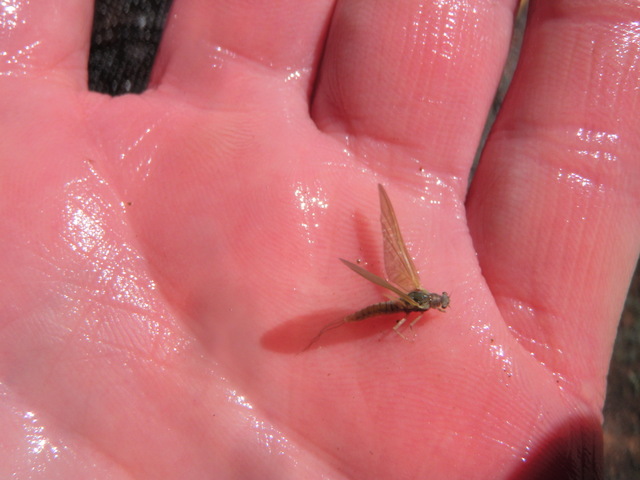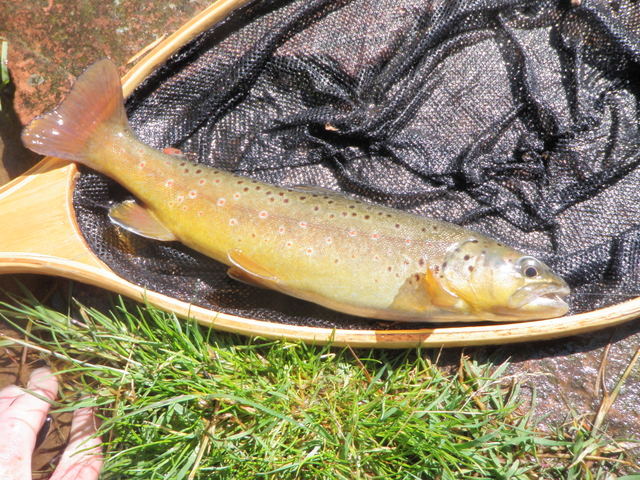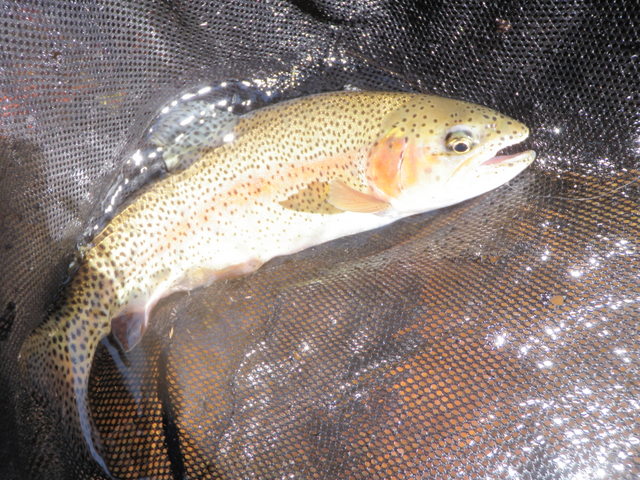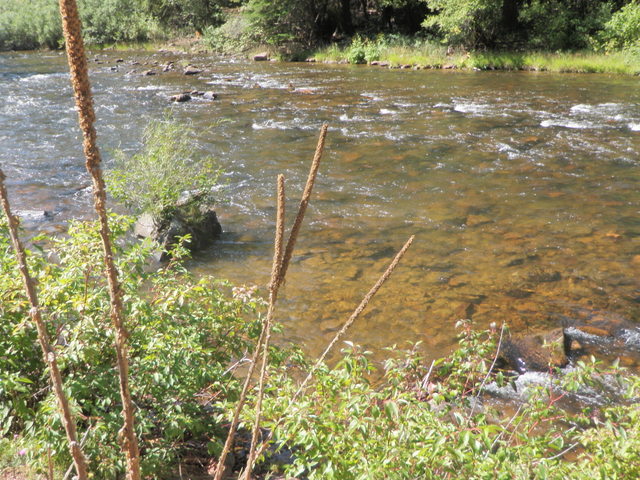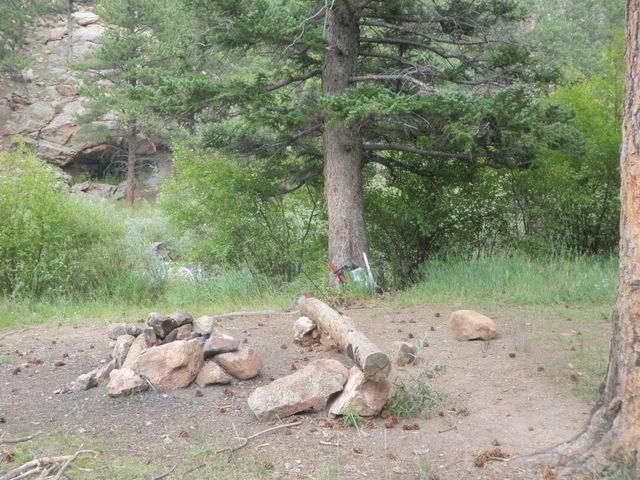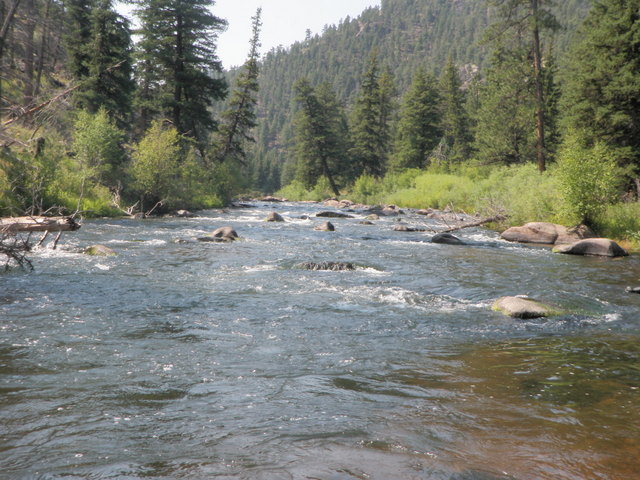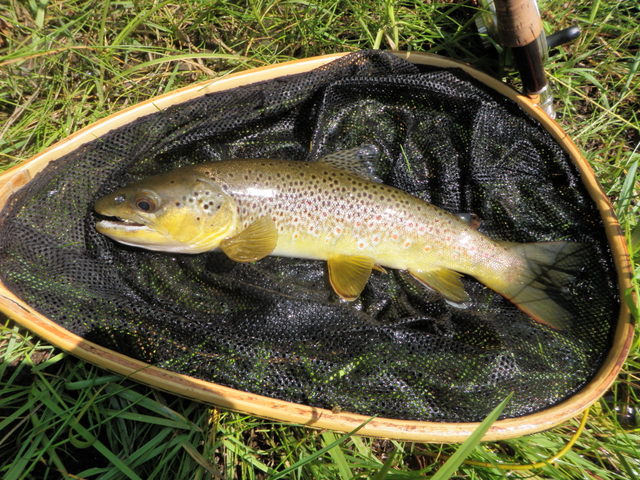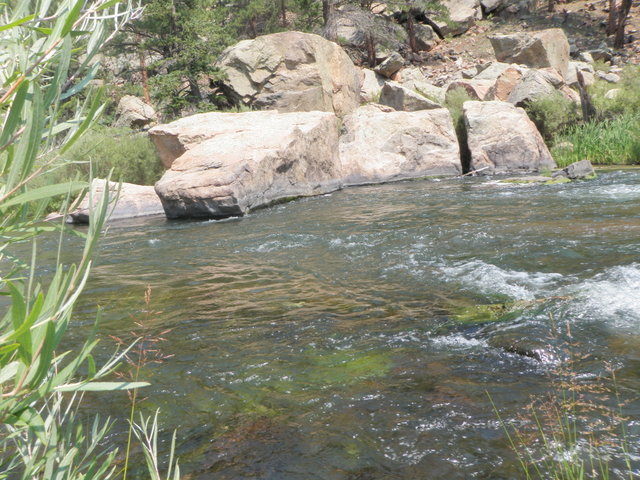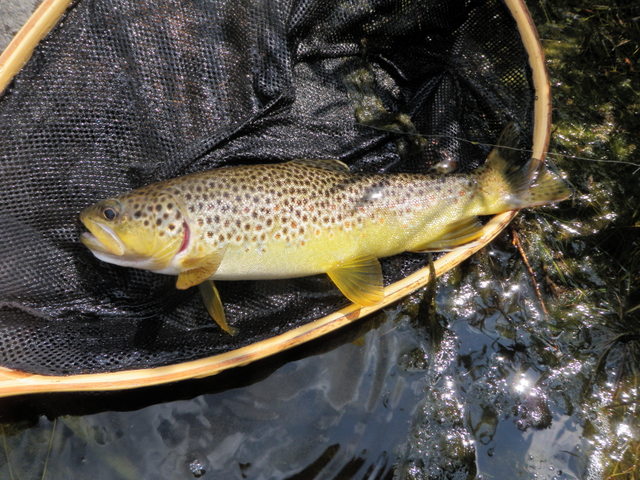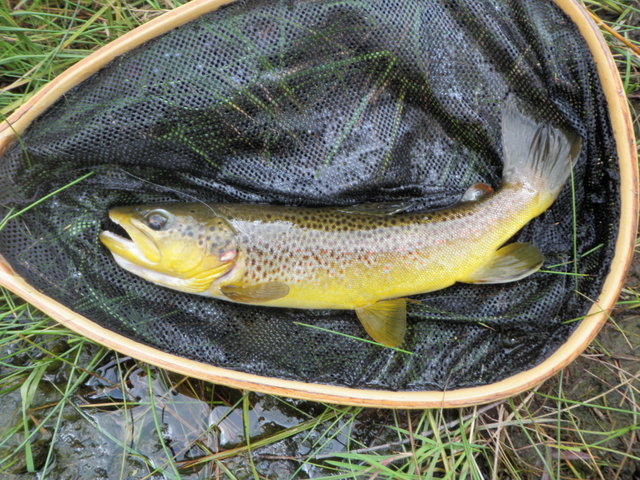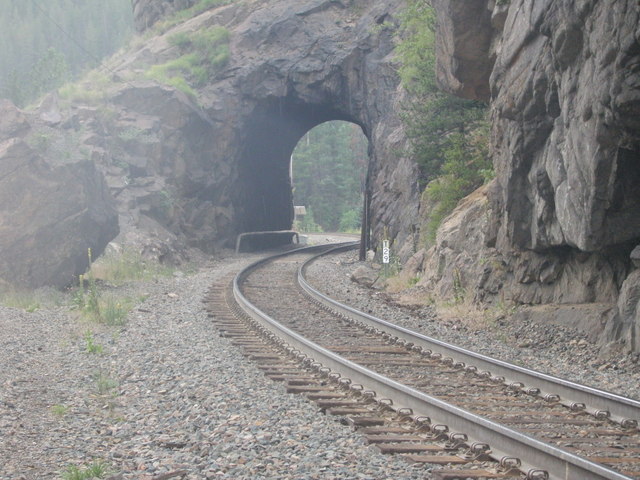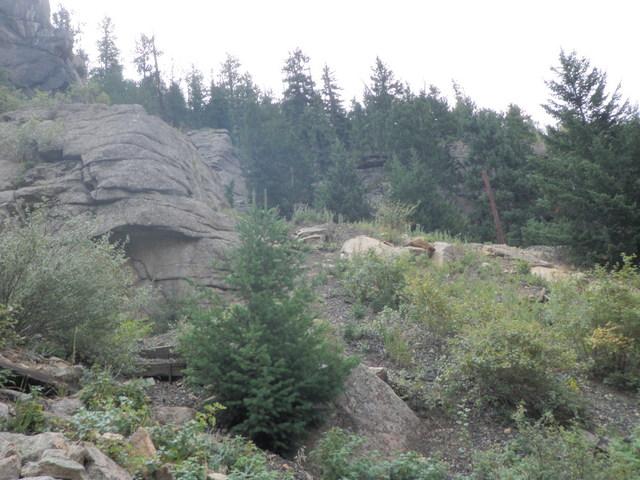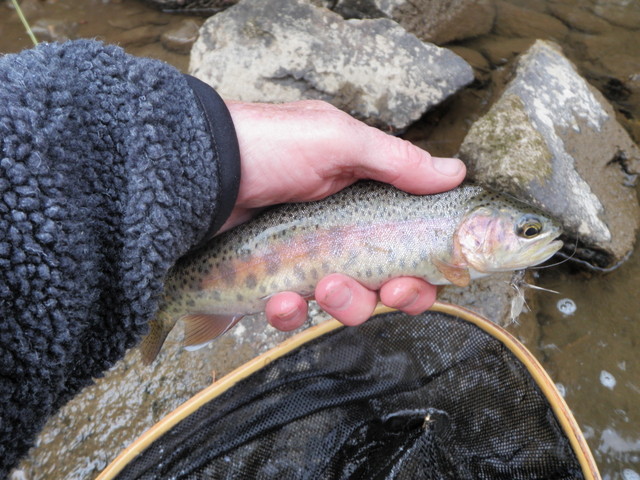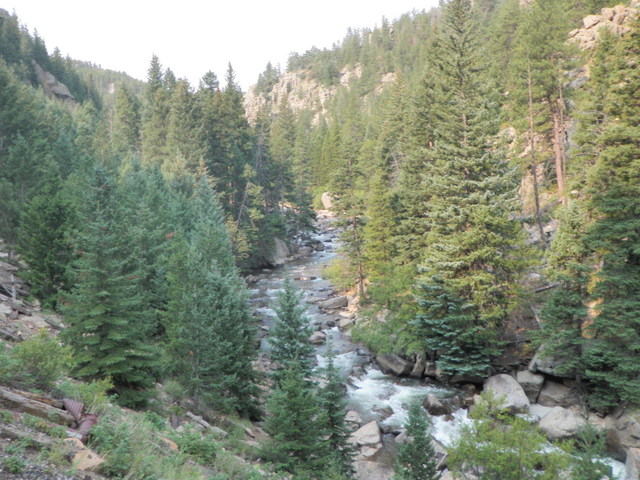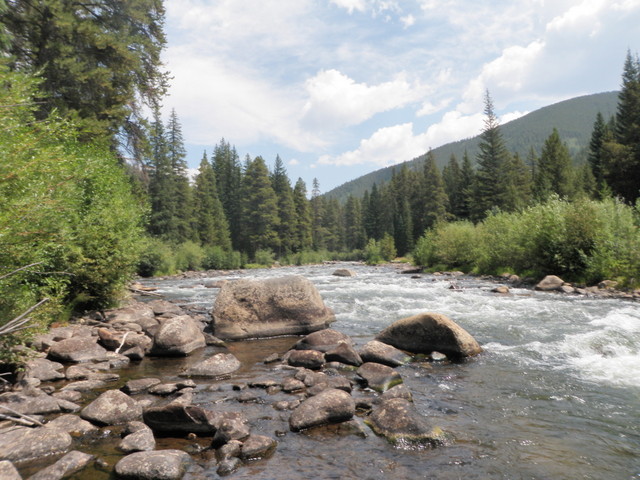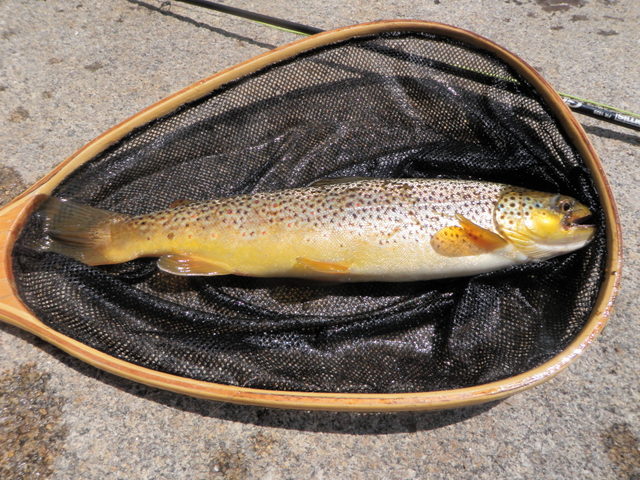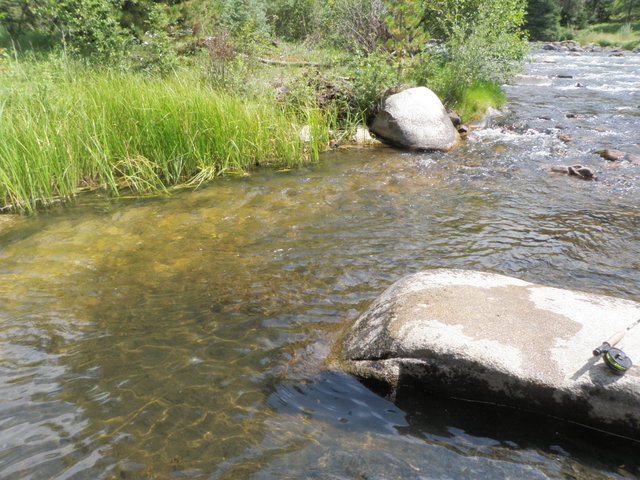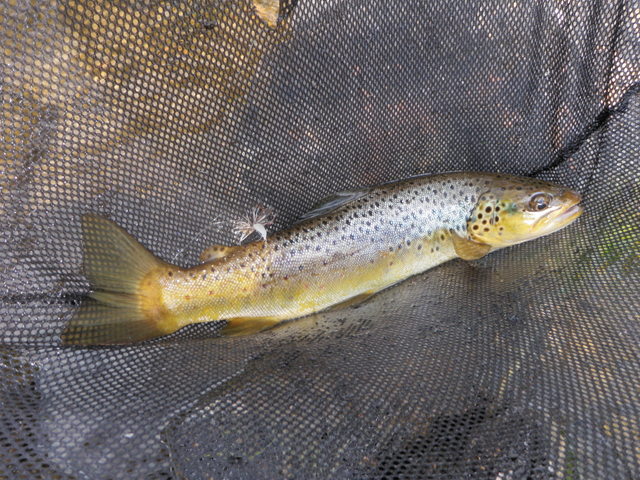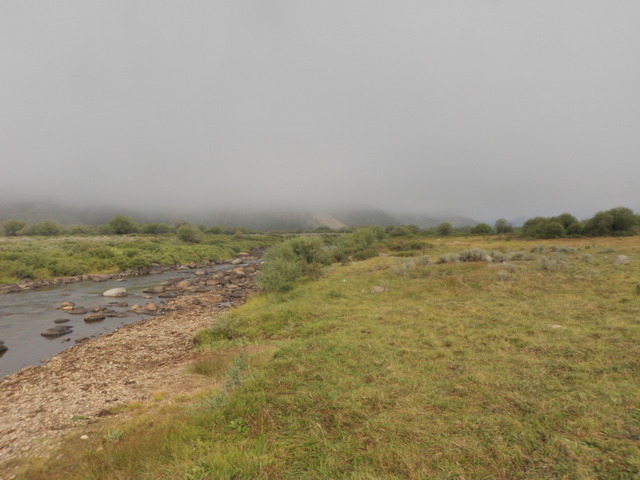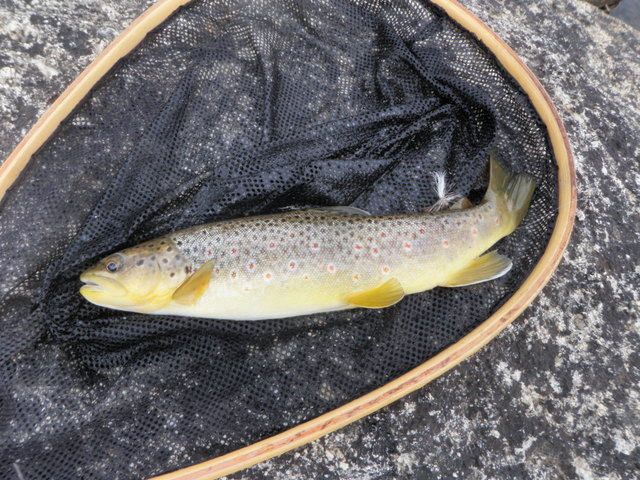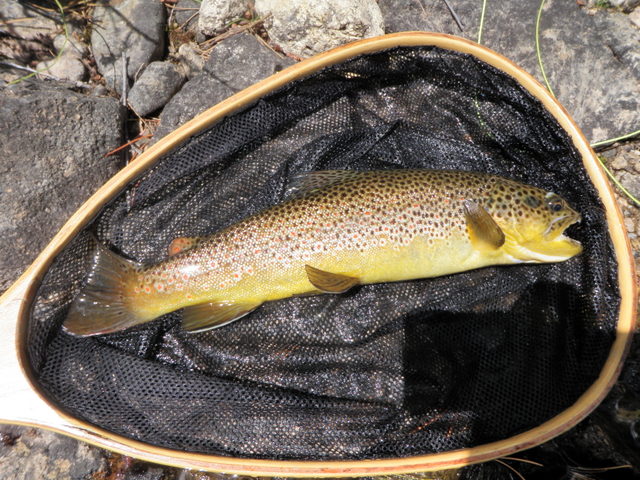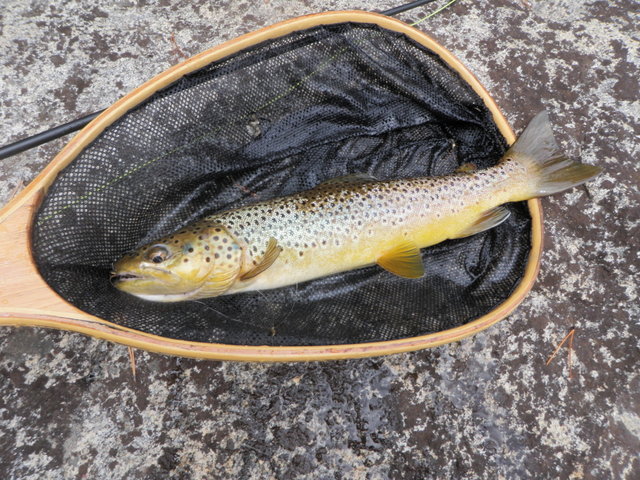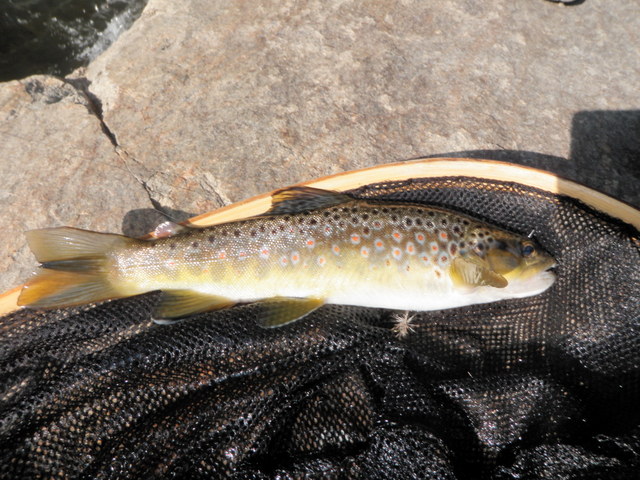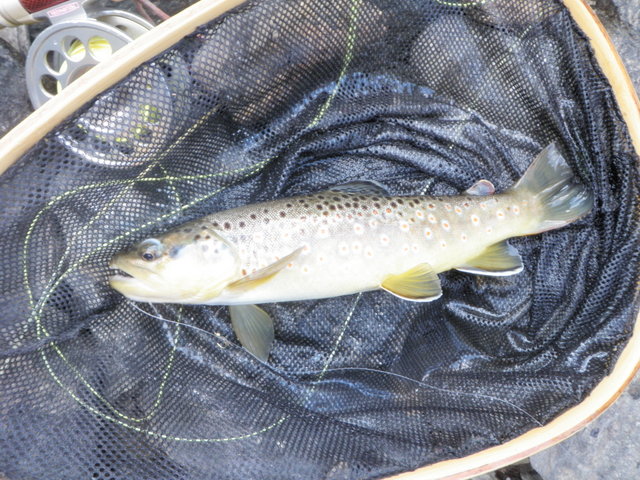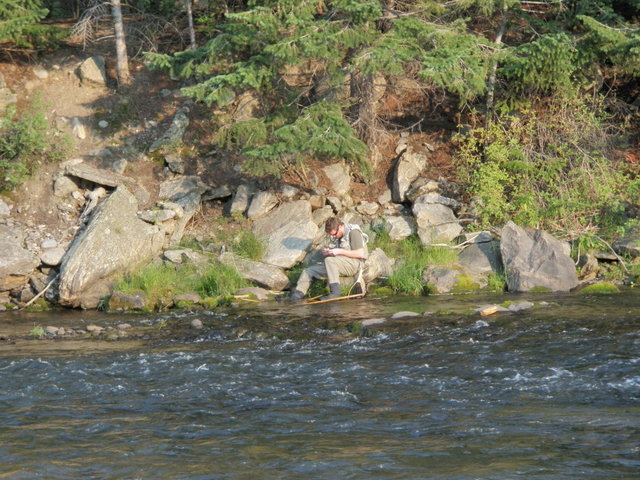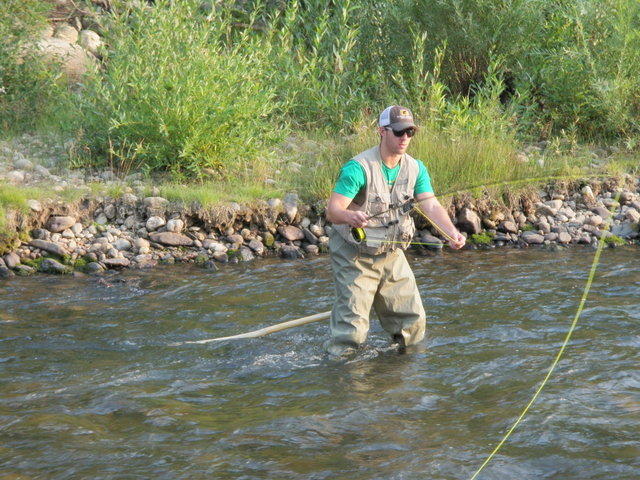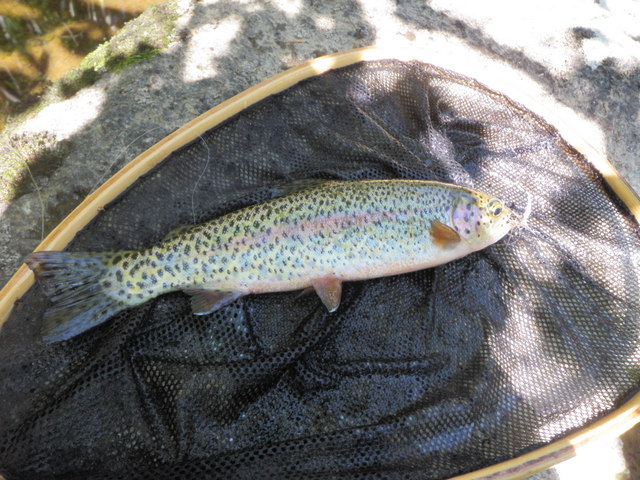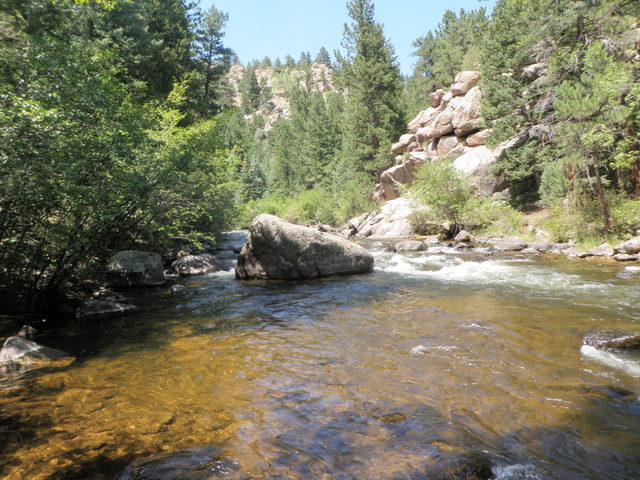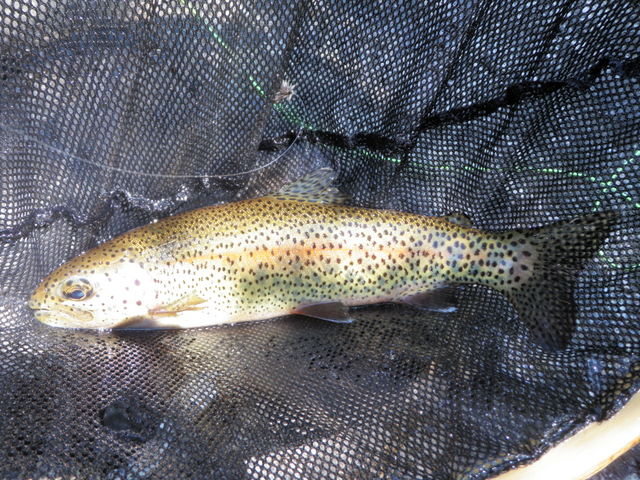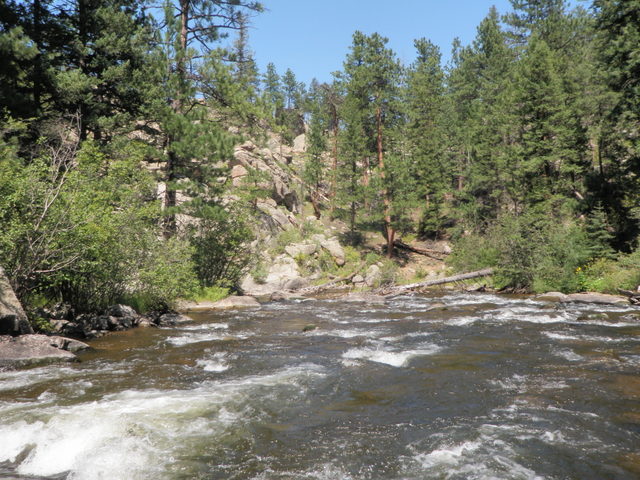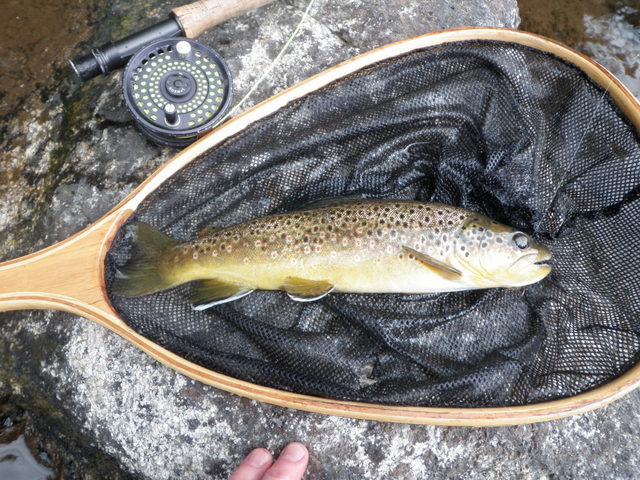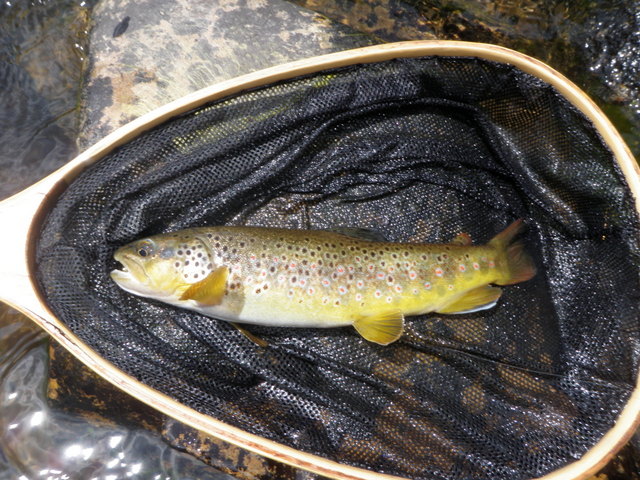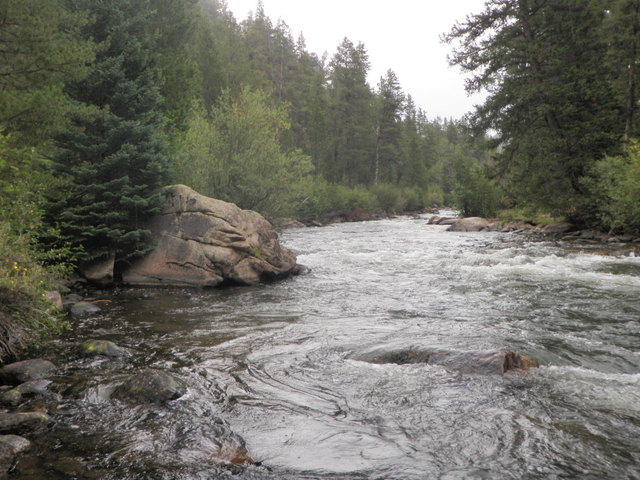Time: 10:00AM – 5:30PM
Location: Mile Marker 11.5 area, began where dead trees span the river.
Fish Landed: 34
Frying Pan River 08/24/2012 Photo Album
When I returned to my camp site on Thursday evening there was a break in the weather that allowed me to prepare dinner, but as the sun sank behind the western mountains, it began to rain lightly again. Once again I adjourned to the Santa Fe and read by the light of my headlamp for an hour or so. At around 9PM there was another break in the rain, so I took advantage and hurried into the tent, but I woke up several times during the night to the sound of raindrops splattering on the rain fly.
Friday morning wasn’t much different from Thursday as the tablecloth was coated with water and there were heavy clouds and mist everywhere. Once again I took my time with breakfast and packing a lunch and took a 40 minute walk from the campground along the road that follows the perimeter of the lake high above. I snapped some photos from the high vantage point and returned to the campground. I decided to start a bit later on Friday as the air temperatures didn’t warm quickly without the benefit of sunshine and the fishing really didn’t seem to pick up until mid-afternoon.
My strategy for Friday was to fish the water at the bottom border of the 2.5 mile public section below the dam. Perhaps the green drakes had moved and were entering the coldest stretch of water. I drove to the downstream border with the private water and executed a U-turn and parked at the first pullout above the place where two or three dead trees spanned the river and formed a nice pool.
By the time I was prepared to begin fishing I discovered another fisherman with a guide had moved into the water on the south side just above the fallen trees. This was exactly the water that I was anxious to fish, but I’ve discovered patience is generally rewarded, so I decided to prospect around the small island just upstream and then check back closer to when the hatches typically begin. Once again I tied on the Chernobyl ant and added a beadhead hares ear dropper. First I worked the smaller left channel next to the road and landed a medium size brown near the top in a shallow run. I circled back to the bottom of the island and covered the water to the right of the island with no success. At the top of the island I prospected the 20 foot wide riffle/pool where a cube shaped rock protrudes and a tree is growing from the middle of the rock.
Here I hooked a rainbow on the Chernobyl to the right of and below the rock that hosts a tree, and then another rainbow smashed the Chernobyl just to the left of the rock. Late morning fishing was looking pretty encouraging, and the fisherman and guide appeared to do me a favor by forcing me to this area. I gazed across the river from the tree rock, and determined that I could probably cross at this point. There was some attractive water on the opposite bank where the main current angled to the left and then ran along the bank for fifteen feet or so before dropping into a swift channel. Between the rocks where the river angled and the bank there was a nice wide smooth area of water roughly three feet deep. I managed to wade across the tail of tree rock and then maneuvered to a nice position to the side of the angled pool just described.
I began casting the Chernobyl and hares ear combination to the pool area, and as I prospected this water I spotted at least five or six decent fish. Unfortunately they were quite selective. I could see them react to the Chernobyl ant as several moved a foot or two toward the drifting giant ant, and others twitched their tail when it came into view, but none would commit. I did see a rainbow rise and sip in a tiny insect a couple times so this began an hour of fly changing as I went through a pheasant tail nymph, zebra midge, griffith gnat, parachute ant, PMD comparadun, a gray caddis, and a CDC BWO. I finally landed a brown on a long downstream drift of the CDC BWO at the very tail of the pool just before the current smashed against the bank.
At 11:30 I decided to eat my lunch in case a hatch commenced earlier than Thursday. The air temperature was moderately warmer, but there were still quite a few large clouds with only infrequent appearances of the sun. I grabbed my lunch bag and water bottle and walked down the road to the fallen trees and discovered that the nemesis fisherman had departed.
After lunch at 12:15 I returned to the bottom of the pool where the fallen trees span most of the river and returned to the Chernobyl ant plus a beadhead phesant tail in anticipation of PMD activity. I tossed the pair eight feet out in the current just below a large rock above the angled trees and a medium sized brown grabbed the pheasant tail on the swing. Next I began prospecting the still water along the left bank between the bank and the faster main current. I began shooting casts upstream within five feet of the bank and in short order three nice 12-13 inch trout crashed the Chernobyl. Two were rainbows and one was a brown and I was shocked at this good fortune using the buoyant attractor as I now reached seven fish on the day.
At 1PM I began seeing rising fish toward the tail of the pool just above the fallen trees. The productive water along the bank had now been covered so I walked back to the tail and clipped off the two fly combo and tied on the money fly, a size 16 light gray comparadun. As the frequency of rises increased so did the refusals to my fly so I seined the water with my tightly woven net and scooped up two mayflies. Upon inspection I realized that they had quite yellow olive underbodies and they were closer to size 14 than 16. I searched through my fly box that contains quite a few tied for Pennsylvania including sulfur comparaduns and selected a size 14 and knotted it to my leader. The Keystone State fly proved to be a saviour as I netted seven fish mostly in the 11-12 inch range in the bottom 10-15 feet of the run/riffle/pool above the trees.
I worked my way across the river just above the trees and began casting back to the middle from the right side facing upstream. The right side, which is actually the south side of the river, was actually more attractive with much more water of moderate depth that is typical holding water for trout. Unfortunately now that I achieved my ideal position, the fish began rejecting the size 14 fly that had served me well for the first hour or so of the hatch. I decided to switch back to the money fly, and that landed me a pair of medium sized fish, but my success was spotty.
I decided to abandon the fish rising in the faster water where the faster current fanned out over a rocky bottom, and began to work my casts to the shallower slower water upstream. This proved to be the answer and I landed another eight medium sized mostly brown trout by 3PM. It was an unbelievable sustained two hour hatch that yielded fifteen fish, but for some reason I felt like I could have done better. At this point I decided to continue working my way up along the right side as quite a bite of attractive water remained. However, as I attempted to make a step, my right heel got wedged between two rocks. My momentum carried me forward while my wedged foot remained stationary and I fell forward. I caught myself but for a spit second some water trickled over the top of my waders, and I could feel cold water seeping down my left leg. My feet were already cold from the icy temperatures coming from the bottom release dam and it wasn’t an extremely warm sunny day so I decided to wade back to the opposite shore and then go to the car and change.
I removed my waders and turned them inside out to dry and changed all my clothes for dry replacements. After a half hour in the direct sunlight, the wader feet felt dry enough to put my feet into. It was now probably 3:45 so I stood on the shoulder of the road and observed the area where I’d fished in the morning with the cube rock and a tree growing from the middle of the rock. The amazing hatch had clearly dwindled by now but I could spot a couple fish, so I decided to give them a try. I tied on the money fly and began prospecting and quickly picked up fish. Apparently the fish were tuned in to stragglers at the end of the hatch and they were jumping on my money fly with confidence.
First a small brown inhaled the comparadun next to the cube rock and then two nice rainbows devoured it in the nice faster riffle just beyond the rock. I moved closer to the bank and began shooting casts directly upstream above the cube rock and landed two more nice browns along the left edge. I could see one of the browns leave its station close to the bank and swim two feet to confidently sip in my fly. What a confidence builder that was. When I reached the point where the faster current was tight to the bank I retreated and planned my next move.
I gazed up and down the river and then across and spotted the triangular pool that frustrated me for an hour in the morning. Could those five or six nice fish be duped as well by my hot money fly? Brimming with confidence it was time to take on the challenge. I waded along the bottom edge of the cube rock pool and then along the top of the faster water to a point near the top of the triangle. I began casting to the closest current seam first. It was like feeding candy to a child. The trout leisurely glided up and sipped in the comparadun, and I landed four or five nice trout in this area. Once I fished the triangle out and disturbed the water with multiple fish landings, I moved up along the right bank a bit and landed another brown.
As the shadows began to creep over the river, I noticed an increase in mayflies. Was this another wave of PMD’s or something different? Once again I held my net in the water and scooped up a BWO. I switched the money fly for a CDC BWO, but the visible fish that I drifted over rejected my BWO imitation. By 5:30 my fortunes had waned and the shadows were lengthening and I was getting quite chilled so I retreated back along the bank and crossed below the cube rock.
It was quite a day on the Frying Pan River. I experienced two hours of an intense PMD hatch, but I actually enjoyed the aftermath period more when I could focus better on individual fish and had success doing so. The pace was less frenzied, but I caught as many fish, and the fish were on average larger. I still had Saturday to look forward to.

